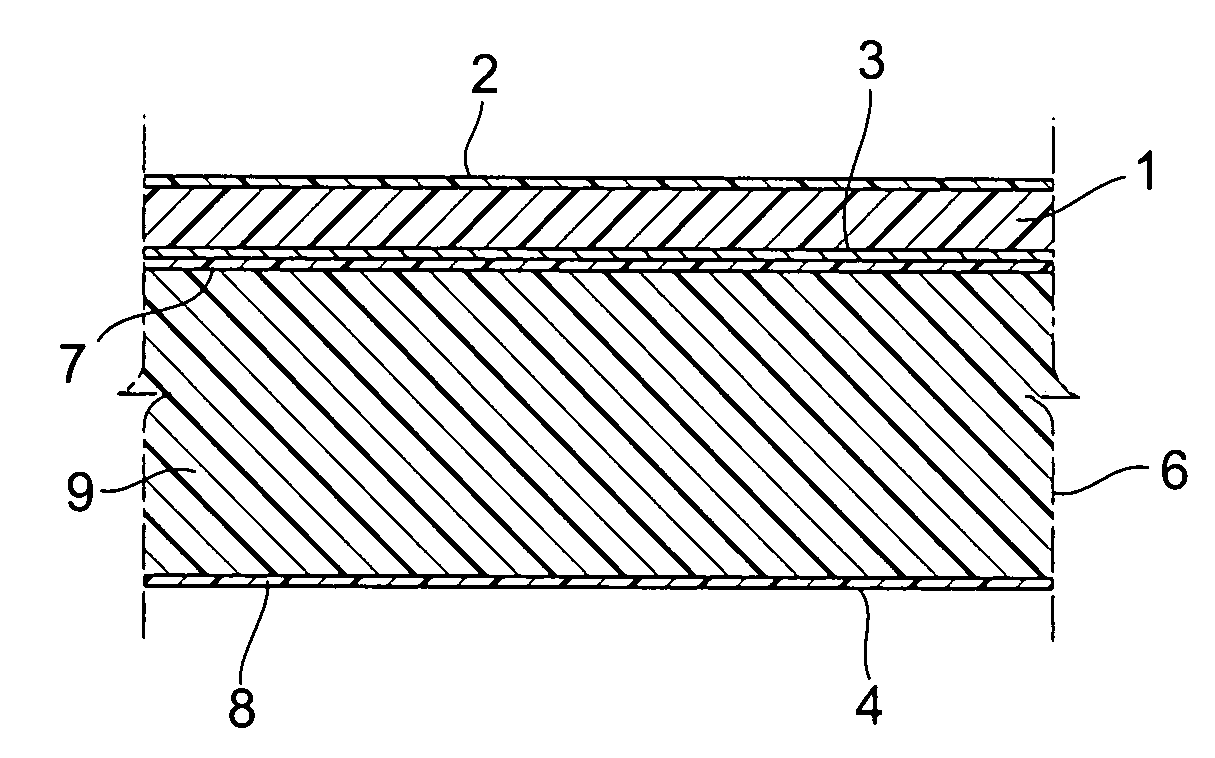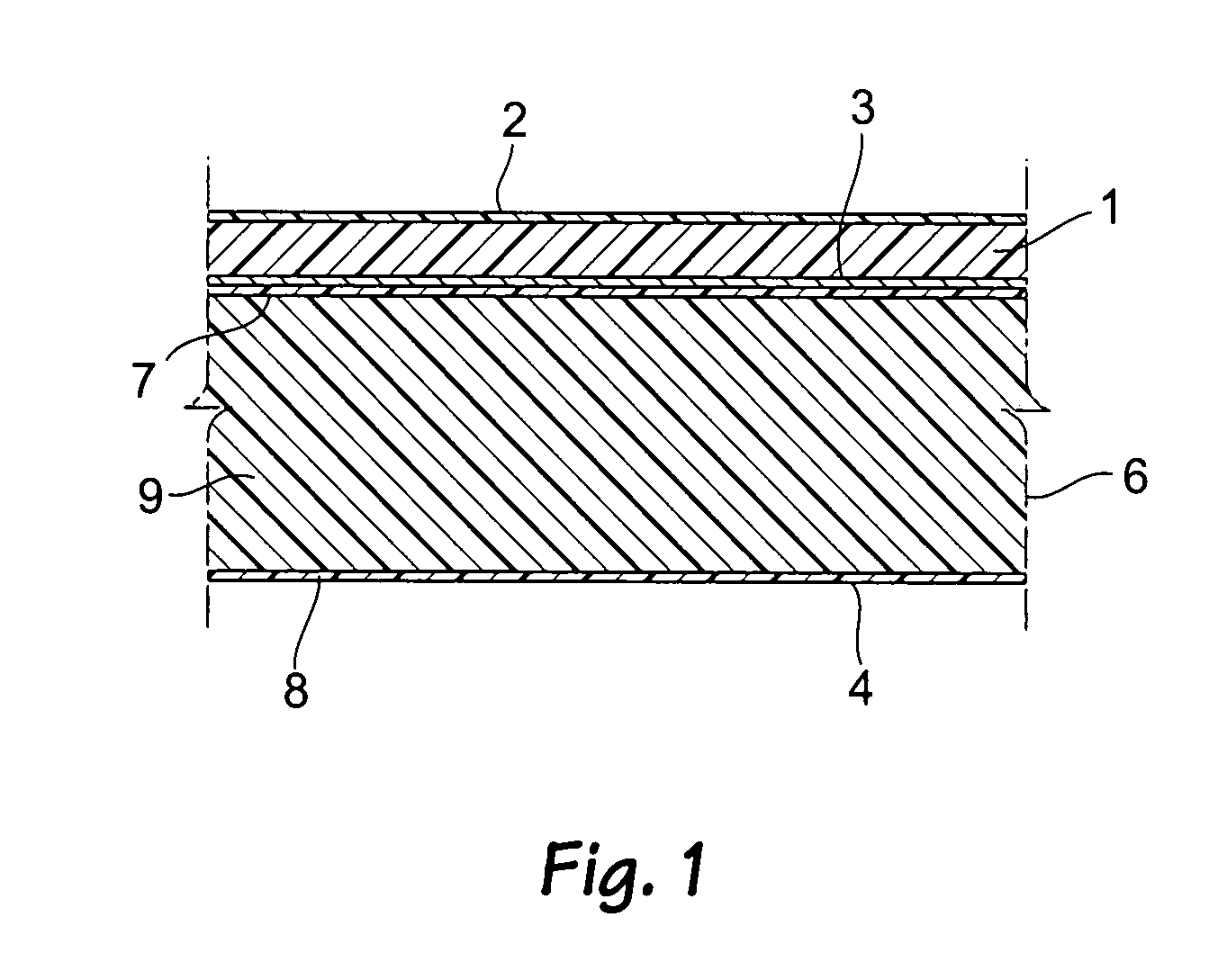Desert camouflage
a technology of desert camouflage and camouflage material, which is applied in the direction of knitting, weaving, straight-bar knitting machines, etc., to achieve the effect of reducing the temperature inside the vehicle and reducing heat conduction
- Summary
- Abstract
- Description
- Claims
- Application Information
AI Technical Summary
Benefits of technology
Problems solved by technology
Method used
Image
Examples
Embodiment Construction
[0011]With reference to the single FIGURE in the drawing, the camouflage material of the present invention includes an outer, thermal insulating, fabric layer 1 formed of knitted fiberglass or polyester and fiberglass which are knitted together for high strength. When 100% fiberglass is used, it is preferably G19P33 industrial knitted fiberglass (20×14 pick / sqin) available form Amatex, Norristown, Pa. The outer surface of the layer 1 is coated with a film of polyvinyl chloride (PVC) or polyurethane (PU) film 2 coated with carbon black to increase solar loading on the layer 1. The carbon black applied to the film 2 is the main provider of thermal insulation for the material. When PVC is used, the film is 225 to 275 and preferably 250 microns thick, and the carbon black is 40-60 and preferably 50 microns thick. An aluminum coating 3 is applied to the inner surface of the layer by vapor deposition. The coating 3 is 5-10 microns thick and faces the inner side 4 of the material which is ...
PUM
| Property | Measurement | Unit |
|---|---|---|
| Thickness | aaaaa | aaaaa |
| Thickness | aaaaa | aaaaa |
| Thickness | aaaaa | aaaaa |
Abstract
Description
Claims
Application Information
 Login to View More
Login to View More - R&D
- Intellectual Property
- Life Sciences
- Materials
- Tech Scout
- Unparalleled Data Quality
- Higher Quality Content
- 60% Fewer Hallucinations
Browse by: Latest US Patents, China's latest patents, Technical Efficacy Thesaurus, Application Domain, Technology Topic, Popular Technical Reports.
© 2025 PatSnap. All rights reserved.Legal|Privacy policy|Modern Slavery Act Transparency Statement|Sitemap|About US| Contact US: help@patsnap.com


